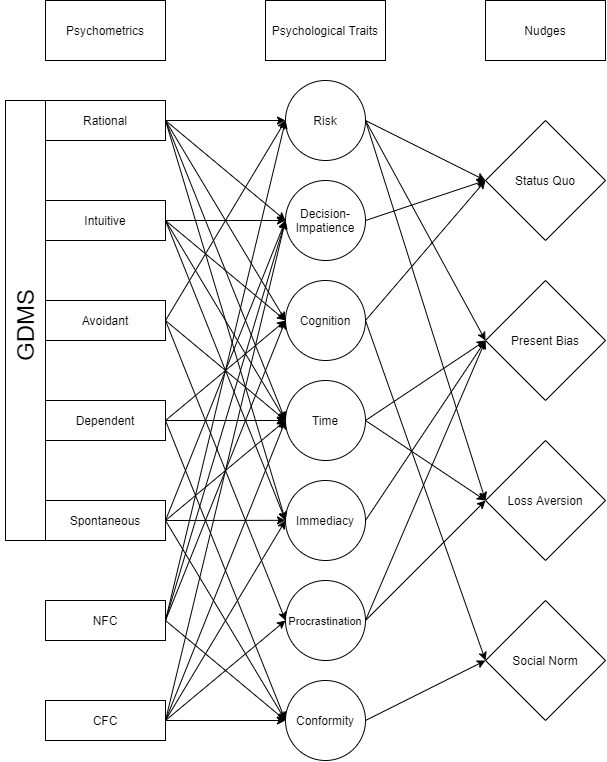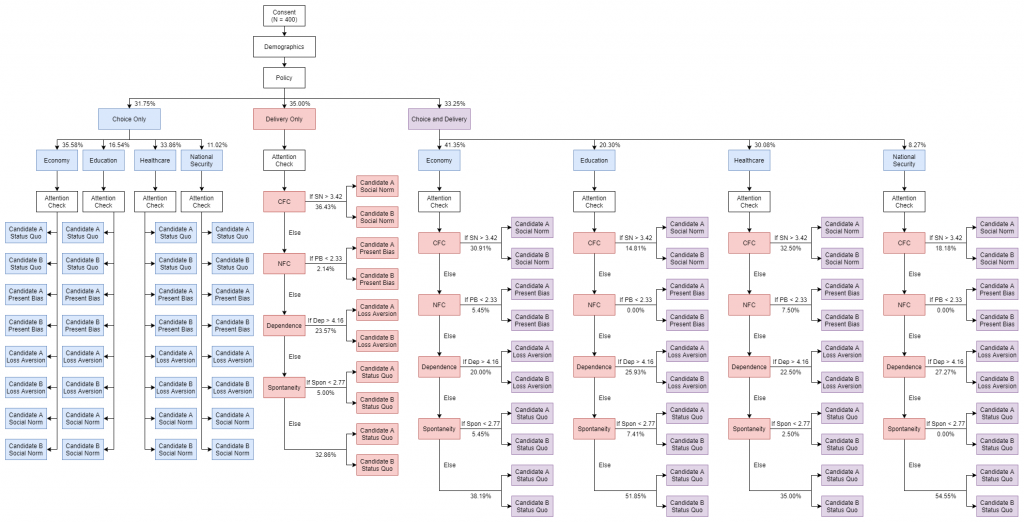
In June, I was awarded some funds by MMU’s Graduate School to support my research. Unlike others, who may have used the money to go to a conference, I spent this award on people. 1,139 people to be exact.
My PhD investigates personalised nudging and political decision-making. I understand there may be some terms here which readers will not immediately understand, so I’ll break it down.
Firstly, nudges are changes in how a decision is framed which can have a significant impact on which outcome is selected. For instance, automatically enrolling people into a program will lead to more people staying in that program than not automatically enrolling, even though the decision to join the program is ostensibly the same regardless. Informing people about how much their neighbours spend on energy/food/broadband (or any commonly consumed item) will typically see people choose to spend money on the same item in the same way.
Nudges have been around for a while – Nudge, the book written by Nobel Laureate Richard Thaler and law scholar Cass Sunstein was released in 2008. In 2010, the UK’s Behavioural Insights Team (sometimes called the nudge unit) was established to use nudges in UK public policy. And, for the most part, nudges haven’t changed too much since then. But now they are. With more technology and data about individuals, there is a growing desire to personalise nudges. I will address how this can be done in a moment; right now I will focus on why.
The reason we might want to personalise a nudge is that everybody’s different. Some people may care a lot about the opinions of others, and thus a social norm nudge would be effective at influencing them. Others might be impatient or very busy and may benefit from automatic enrolment and default options rather than active choices. Where the outcomes being nudged towards benefit the decision-maker, we have good reason to try and maximise the effectiveness of nudges (of course, nudges don’t always benefit people, but this is a messy topic which we don’t need to get into right now).
Lastly, by political decision-making, I mean a broad array of choices that influence political outcomes. The most obvious is voting; but the ballot box is a place with limited capacity (and desirability) for nudging. So the term becomes broader – a clip you see on social media, a slogan repeated in newspaper headlines, an advertisement shown on the TV. These moments of political decision-making are filled with opportunities to nudge, as political marketers have known for years (note that a lot of nudges existed before the idea of nudge was coined. It is therefore quite easy to call, say, newspaper headlines from the 1930s nudges. Functionally, they are, but nudges and nudge theory go beyond function and try to describe the behavioural phenomena underpinning which make them function).
For instance, consider these two advertisements:

Both advertisements are quite typical of an advertisement for a politician in America (or maybe even the UK). Each element has been chosen for a reason. We might speculate about aesthetics, or even the posture of the two (relatively similar, demographically speaking) candidates. But when I was making these ads, I was thinking in terms of nudges. Advertisement 1 (Jack Smith: A Safe Pair of Hands) for instance, plays on the idea of loss aversion – people dislike losses more than they like similar gains. Jack Smith promises voters safety, hence the slogan, and this is reinforced using a handshake background. Jack Smith is a low risk candidate.
Advertisement 2 (Steve Jones: Delivering for You), also nudges, but rather than nudging loss aversion, this ad nudges time preference. People have many reasons to value the present more than the future – the so-called present bias – and so people can be nudged by appealing to today rather than tomorrow or next week. Steve Jones is clearly doing that – not only will he deliver, but he’ll deliver now.
As above, different people can be expected to respond differently to the same nudge, which means personalising the nudges in these advertisements could influence how likely a person would be to vote for the featured candidate. There is an obvious benefit from doing so – you would get more votes! (This isn’t exactly nudging for good, I should point out. But these types of nudges, in highly personalised places such as social media, are being used, so it’s important to investigate them regardless of social efficacy. Certainly, though, we should always keep that question in our minds.)
So I tested this idea. Using MMU’s funding, I recruited 1,139 participants on Amazon’s Mechanical Turk service. I first asked these participants questions about how they make decisions (so-called psychometric questions), questions about their political beliefs, and questions about who they were generally (demographic questions). From these data, I built a model (i.e. a psychometric map and corresponding ‘algorithm’) which I used to predict which nudge would be most effective for a given individual, and then presented each participant would their personalised nudge-advertisement.
Psychometric map:

Personalisation ‘Algorithm’:

The hypothetical psychometric map is much more complicated than the resulting algorithm (trust me!), but this is to be expected – sometimes data confirm predictions, sometimes they do not. I’m showing you both for two reasons. Firstly, this stuff gets complicated very quickly – the Facebook algorithm, for instance, which selects what content to show you on your timeline, reportedly has up to 100,000 inputs; my study has seven! Secondly, even when relatively simple, the model is multiplicative – seven inputs and four outputs means a possibility of 28 different routes. What I have done in this study is only marginally more complicated than the most basic setup (i.e. 1 input, 2 outputs). I say this not to brag – rather, to re-emphasise the reliance of this new branch of behavioural science on technology and data.
So, do personalised nudges make people more likely to vote for one candidate over another? The answer is yes.

As seen above, when no nudges are used (control), the candidate which would be nudged (if this were not a control) is favoured about 5% less than the other candidate (this is what ‘effectiveness’ measures). Equally, when nudges are used, but impersonally, the nudged candidate is favoured around 2% less. This is an improvement, but not significantly. However, in all three instances where personalised nudges are used, the nudged candidate is favoured significantly more than the alternative candidate. This is good evidence to suggest personalised nudging does influence political decision-making. (I have chosen not to elaborate on the different types of personalisation I use, but if you would like more details, see my recent paper on the matter, or feel free to contact me). But what’s more, personalised nudges appear to be more influential than impersonal nudges.
The implications of these findings could be quite significant. We’ve all seen eerie advertisements on social media which show us a product we recently looked at. But that’s a question of targeting – you looked at the product, so the algorithm targets you with that product. But in the near future, with growing research into personalised nudging, we might move beyond merely product targeting and begin to personalise all aspects of advertisements (political, commercial, public-informational) to influence on an individual level.



1 comment on “Inside the Influence Factory”
Brilliant Work